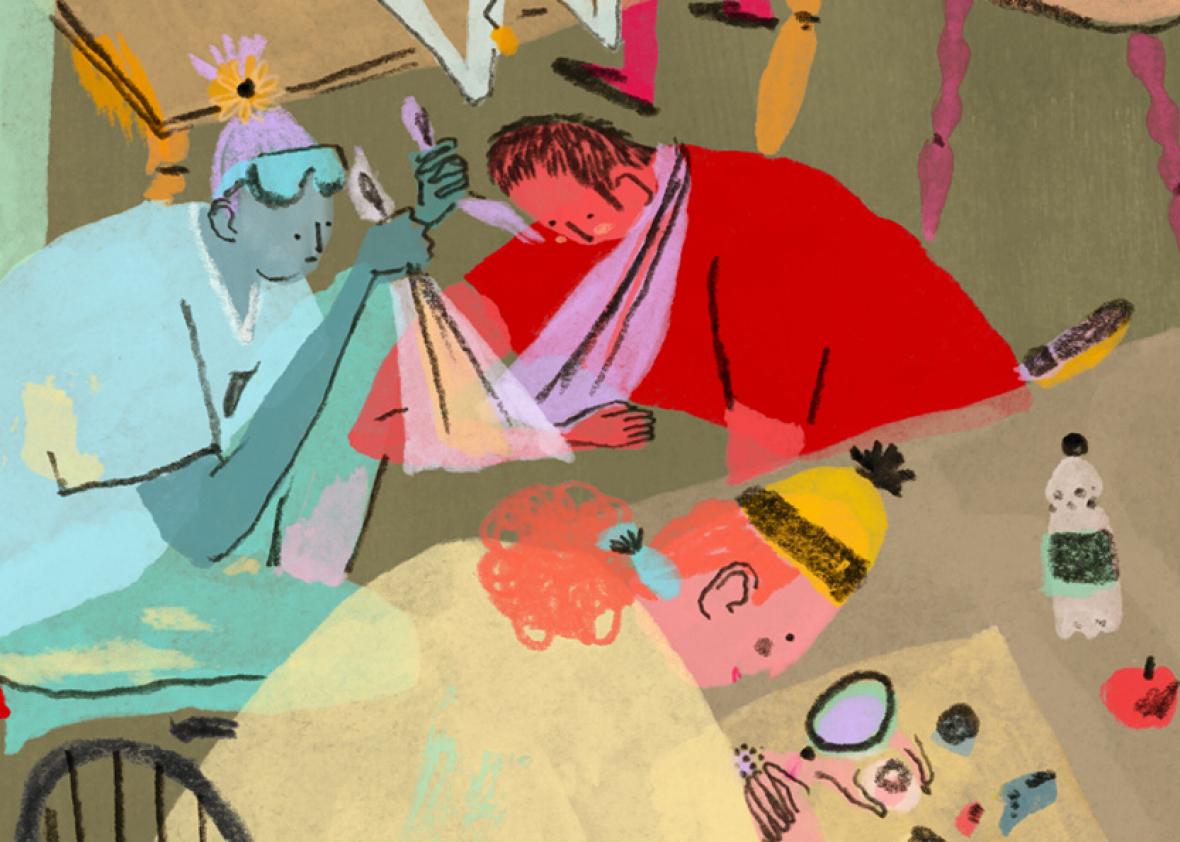The summer after my senior year of high school, I took an EMT class. I thought I might become a doctor, and training to be an emergency medical technician seemed like the best way to ease into a life of saving lives. It turns out I was not cut out to be a doctor—something I discovered in an ER when I was assisting a man who had sliced his hand open on an aluminum foil container. As I watched the blood pool under his hand while the doctor stitched up his gash, I decided pre-med wasn’t for me.
Still, that summer I learned how to help someone who was bleeding profusely, administer CPR on a baby, and do a fireman carry. You don’t have to be a doctor to do any of these things—they’re all things to help people until they can get to a doctor—and they are also things everyone should be comfortable doing.
The course I took was five weeks long, all day long, which is unrealistic for most people. I’d never suggest that everyone train to be an EMT—my certification lapsed years ago—but basic first aid is different. There’s no reason you have to be panic-stricken during a life-threatening emergency. All the skills I mentioned above—plus other simple things like how to stabilize the neck of someone who has fallen or clear an airway—are easy to learn and can help save lives.
To be clear, as all health professionals will tell you repeatedly: The best thing to do in case of an emergency is immediately call 911. I can’t emphasize that enough. You shouldn’t, and can’t, replace a doctor. But the biggest lesson I learned from EMT training was that maintaining care until the health professional arrives can be just as important.
CPR is the most famous technique in first aid class—and a melodramatic movie trope—but some will argue that it does more harm than good. That’s really only the case if you don’t know what you’re doing, which is all the more reason that people should learn how to do it right! According to the American Heart Association, which clearly has an agenda here—a lifesaving agenda—effective CPR provided immediately after sudden cardiac arrest can double or triple the chance of survival, but only 32 percent of victims receive such treatment. While the AHA offers a 90-second instructional video for hands-only CPR on its website, this is not sufficient. Everyone should learn CPR in person to prevent the possibility of incorrectly administering it. When I spoke with emergency room physician Leana Wen, she emphasized this point. “Many people think they know how to do CPR, but don’t—if you only learn how to do it once, you’re not going to know how to do it again.” The only thing standing between you and potentially saving some of the other 68 percent of victims who don’t receive CPR is a 30-minute class. It’s so simple to learn, yet currently, less than half of U.S. states require high school students to be trained in CPR in order to graduate.
But there’s no reason to stop at CPR. Recognizing what drowning looks like—which is not how it’s depicted in movies—can help you save a life. Similarly, recognizing a life-threatening problem lets you know to act. If you see someone lying on the ground and know how to stabilize him, or see someone choking and know how to help her with the Heimlich maneuver, you’re contributing to saving a life.
There are no prerequisites for learning how to deal with things like minor burns or seizures. The Red Cross offers a two-hour course—that’s less time than three episodes of House of Cards—that can teach you many of these basics. Combine that class with the Red Cross’s CPR training, and that’s less than three episodes of Game of Thrones. Instead of watching someone get punched in the face on TV, you could learn what to do to help people in real life.
Compared with the rest of the world, the United States falls behind on basic safety training. In Germany, in order to get a driver’s license, you need to be trained in first aid—eight hours of it. That makes so much sense. A terrifying 2.35 million people are injured or disabled due to road crashes in the U.S. each year. That’s not including the 37,000 who die. It only makes sense that you know what to do when disaster strikes during the most dangerous activity most of us ever engage in.
In my EMT class, I learned how to assess a situation—which includes figuring out if it’s too dangerous for me to even attempt to help out—and how to apply a tourniquet. There’s a range of what everyone should know—but even a little goes a long way. Yes, I recoiled at the puddle of blood, but I wasn’t scared. I didn’t want to spend my day surrounded by it, but I learned how to help.
First aid isn’t something you learn once and are set for life. You’ll need to take maintenance classes to make sure your skills are up to date, and that’s fine. It’s worth it. Think of the possibility of saving lives, and you’ll realize this is the most important course you could ever take.
Read more of Slate’s collection of classes you should take.
What classes did we miss? Send your recommendations of up to 200 words to classes@slate.com, and we’ll publish the best.
